
Best Ramadan Sweets from Lebanon and the Middle East
Ramadan, the month of fasting and feasting for Muslims, wouldn’t be complete without special desserts made with sugar syrup, nuts, dates, ashta (Middle Eastern clotted cream), and sometimes phyllo dough. There are plenty of ideas to inspire you as you plan your Ramadan menu. We rounded up over 30 of the most loved Ramadan desserts from our archives, including Halawet El Jibn, Halawet El Riz, Knafeh, Maamoul Mad, Tamara, Ghraybeh, Muhallabieh, Ashtalieh, Maamoul, Lebanese milk ice cream, khoshaf and more! These recipes are sure to delight!
Best Ramadan Sweets from Lebanon and the Middle East
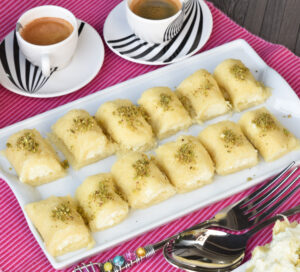
Halawet Al Jibn: A dense stretchy cheese-semolina dough that envelopes a milky clotted cream like filling, that we call in Arabic ashta, and drizzled with sugar syrup flavored with orange blossom water. A unique Lebanese and Syrian dessert that reflects the pure refined art of our cuisine in terms of presentation and taste.
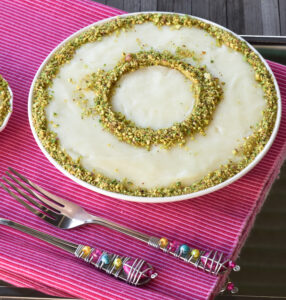
Halawet Al Riz: Bring the flavors of the beautiful city of Tripoli in Lebanon to your kitchen with this cheesy rice pudding that we call Halwaet El Riz.
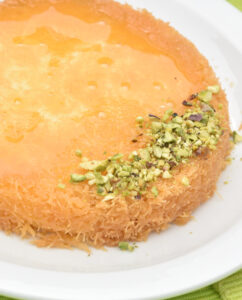
Knafeh Bil Ashta: This scrumptious dessert has everything you expect from a Middle Eastern sweet. Two layers of kadaifi dough (shredded phyllo dough), infused with ghee, sandwiched with a layer of ashta (Middle Eastern version of clotted cream), baked and saturated with fragrant orange blossom water syrup. Yes, no cheese is involved in this version!
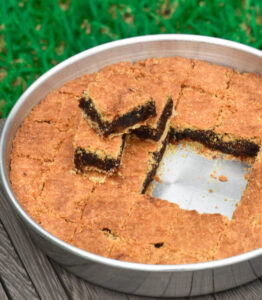
Maamoul Mad bil Tamer/ Date Bars! If you ever had the chance to visit some gourmet sweet pastry shops in Lebanon, then you must have seen Maamoul Mad Bil Tamer / Date Bars assembeled on round baking trays, cut to squares upon serving, they are extremely popular and guess what, they can be sometimes overpriced. Remind yourself that you can make them right in your own kitchen! Wait till you see how fun they are to make at home, just like the pasrty shop style if not better, it is a great recipe, trust me on that!
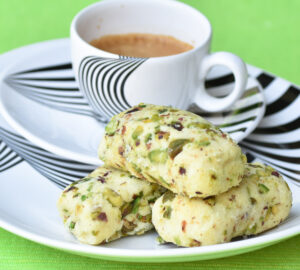
Tamara, Date Filled Ghraybeh with Pistachios: At its most basic, ghraybeh is made from flour, ghee and powdered sugar, humbly beautiful on their own with a cup of coffee, but the beauty can be adaptable to different versions, they can be made with nuts (just like pistachio filled sanioura ) or simply filled with dates like date filled ghraybeh; but when you combine ghraybeh with both pistachios and dates together you will have the best of both worlds— you will end up with a third version that often goes by the name tamara
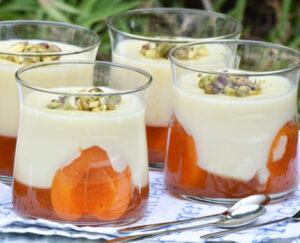
Mouhallabia: Lush but light, Mouhallabia is a classic creamy stovetop milk pudding from Lebanon and the Middle East. It is egg-free and gelatin-free, takes a few minutes to cook and has been enjoyed across the Middle East for centuries; it has very ancient origins and believed that its roots stretch back to the early Persian cuisine. You’ll likely notice that it written as “Muhallabia”,”Muhallabi”, “Malabi”, “Muhalabeya” “Mehalabeya”, and perhaps more to be added to the list!

Farida’s Date Ring Kaak: If you are a date lover like most Middle Easterns including me, no matter how it is served, we have a close relationship with dates, and these “Date Ring Kaak” will never fail to impress you.
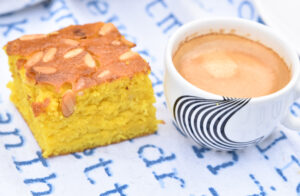
Sfouf: Any occasion, including the month of Ramadan, is more celebratory with this yellow Lebanese sheet cake that is called sfouf, it is the kind typically brought to gatherings in Lebanon and served with a cup of coffee or tea, flavorful enough to serve plain. Sfouf has tons of fans thanks to its cakey texture, nutty taste and turmeric flavor. It’s also globaly loved because it’s just such an easy thing to make, yes, a huge payoff for very little effort.
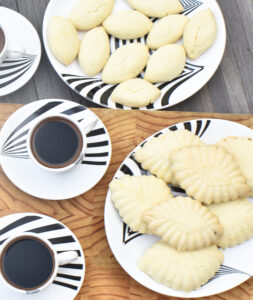
Plain and Pistachio Filled Sanioura: Sanioura is a shortbread cookie that hails from Saida (Saidon) south of Lebanon, the city has a reputation for being home to some of the best Lebanese sweets, and one of the most celebrated desserts is Sanioura, it is scrumptious with a straightforward ingredient list: ghee, powdered sugar and flour.
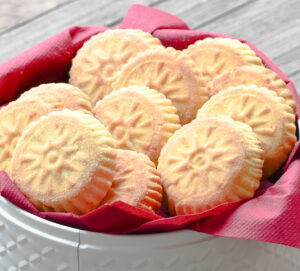
Date Maamoul: they’re melt-in-your-mouth delicious, and it’s impossible to eat one without reaching for a second! What makes this the easiest maamoul is that the dough recipe uses just a few ingredients, flour, ghee, mahlab and sweetened condensed milk, yes you read that right sweetened condensed milk. Maamoul dough is often made with semolina, or a combination semolina and flour, but this recipe just calls for flour with no leavening. The maamoul cookies are just as fun to make as they are to eat.
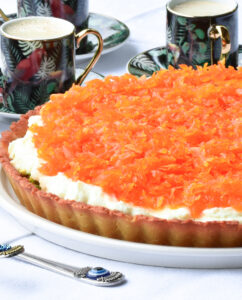
Middle Eastern Tart Style with Ashta, Pistachio and Jazazarieh: The tart has a striking balance of flavors and textures. Be the talk of the town with this fabulous showstopper dessert!
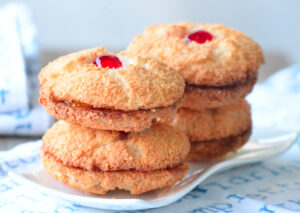
Lebanese Coconut Cookies: Who remembers those coconut cookies? If you have been raised in Lebanon, then most probably you must have had these cookies or at least must have seen them! “Akras Jouz AlHind”/”Lebanese Coconut Cookies” are a classic cookie treat from Lebanon.
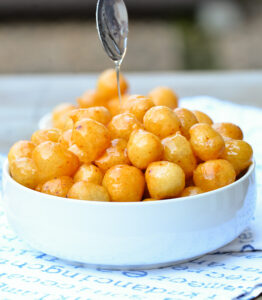
Awamat/ Lebanese Doughnuts: The fried balls have a crispy brown exterior with a dense sugar syrup interior. A vegan, dairy free and egg free recipe and a crowd pleaser both in taste and quantity – though a bit of project but tasting the final product makes it all worthy!
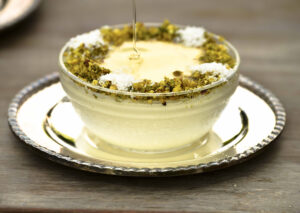
Ashtalieh:Talk about the oriental and Middle Eastern desserts that tickle the senses with their aromas and flavors. Ashtalieh/ Ashtalleya is a Lebanese classic made out of simple cupboard ingredients. The pudding is so easy to make and the sugar syrup is equally simple. I enriched the flavor by adding a handful of desiccated coconut that added a delightful rich flavor – perfect for my taste.
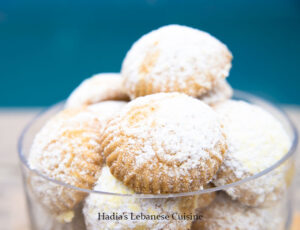
Pistachio Maamoul: Maamoul is a semolina shortbread Lebanese/ Middle Eastern cookie that is bound with clarified butter, orange blossom water and rose water and accented with mahlab (an aromatic white spice used in the Middle East for baked goods). Here, they are filled with pistachios. The maamoul cookies are found in every Lebanese home during Eid and Easter holidays – they are rich, buttery and extremely indulgent!!
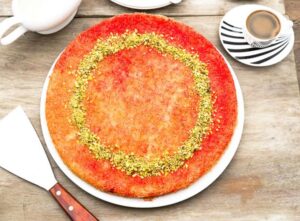
Knafeh Nabulsieh/ Nabulsi Kunafa: I guess there is not much a Middle Eastern dessert that is appealing as a freshly ooey gooey knafeh/kunafa piping hot from the oven. Here is a different version of knafeh/ Kunafa from that I grew up eating in Beirut! Knafah Nabulsia/ Kunafa Nabulsia hails from Palestine, specifically from the city of Nablus in the West Bank. A Cheesy-stretchy cake gloriously encased with crispy browned shredded filo pastry, drizzled with sugar syrup.
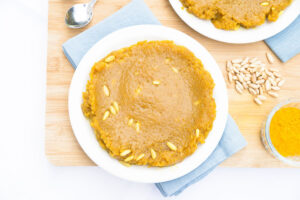
Moufataka: an old lost Beiruti dessert and a true labor of love that despite its popularity 50 years ago and before, moufataka sadly has been lost and needs revival! And it would be hand-pressed to think about a Lebanese dessert better than moufataka.
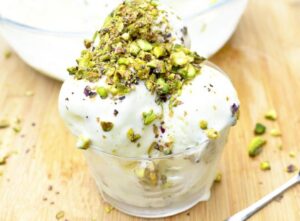
Lebanese Milk Ice Cream: It is an eggless ice cream flavored with salep/sahlab, mustic gum and rose water, and dressed up in raw ground pistachios. You will be blown away by the taste.
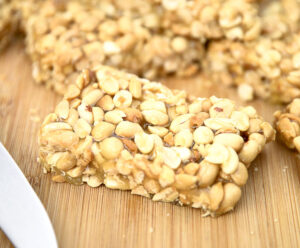
Fistkieh: Sticky Peanut Bars: A vegan snack with no added oil or hydrogenated fats. Fistkieh bars are simply made with raw, shelled toasted peanuts and sugar syrup that binds the nuts together. The sticky bars can be easily found in almost all oriental sweet shops in Lebanon and there are so many options – sesame seeds, starting from almonds, pistachios, cashews to sesame seeds– but my favorite ones are the sesame and peanuts bars!

Lebanese fruit cocktail: a thick smoothie packed with a medley of assorted fresh fruits including bananas,cherries, avocados, mangoes, kiwis, etc – topped with areesha, (curdled cream) pine nuts, and slivered almonds and sweetened with a drizzle of honey, traditionally served in a tall glass accompanied by a spoon -a classic that is found almost in every street corner café in Beirut.

Khoshaf/Khushaf is a dried fruit and nut salad, an old-fashioned Middle Eastern dessert. The wonderful concoction is made of raisins, dried prunes, dried apricots, slivered almonds, pine nuts and raw pistachios all dressed in apricot juice and perfumed with orange blossom water. It tastes completely different than a fresh fruit salad – a fuel of energy and a delicious, unique and fantastic combination of flavors.

Iraqi Kleicha: Resembling tiny pinwheels, those date filled round -shaped kleicha are a staple treat in Iraqi households in Ramadan or Eid! They would go so well with coffee or tea and would round out a cookie assortment. They are a bit of a project to make but worth every minute of it.
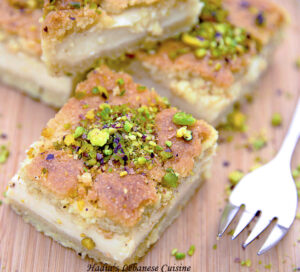
Maamoul Mad Bil Ashta: Popular throughout Lebanon and a personal favorite -semolina-butter bars filled with clotted cream, crunchy on the outside with a creamy white filling on the inside – they have a wonderful distinct orange blossom flavor with a dense texture!
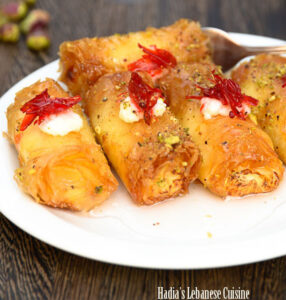
Znoud El Sit: After a long day of fasting, “Znoud el Sit” are so rewarding and so addictive as it is next to impossible to stop at one. Znoud el Sit are crispy on the outside and are filled with a thick clotted cream – fried to a golden brown crisp and dipped in sugar syrup infused with orange blossom water.

Ghraybeh: Ghraybeh has humble ingredients: What would your expectations be if you know that all you need is ghee, powdered sugar and flour to make this classic cookie, and would those few ingredients yield a flavorful cookie on their own? I dare to say a big fat yes! These humble ingredients will end up making one of the most gratifying cookies in the Middle East to enjoy with your morning coffee or afternoon tea, so ghraybeh is something you should consider learning, sometimes simple is best!
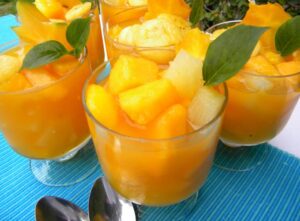
Tropical Fruit Salad: Now please forget about the canned fruit salad and try this luscious tropical fruit salad. The vibrant colors of mangoes, pineapples, bananas, papayas and guavas make a delicious display. Aside from being delicious, this salad is highly nutritious and refreshing. Still there is a secret ingredient that gives this salad its unique flavor. Passion fruit or maracuja. Passion fruit is either yellow or purple on the outside, it contains a jelly-like pulp with lots of small black seeds. I am so in love with this fruit. Make sure to use ripe passion fruits since the flavor becomes sweeter. This fruit salad is great for parties or weekend desserts. A crowd-pleasing dessert and so refreshing after a long fasting day!

Lazy Cake! Though this is not pure Middle Eastern, but you will find it in most Lebanese coffee shops. Easy, delicious and impressive. A chocolate-plain cookie cold cake, made using real chocolate. It is rich, fudgy, chocolatey and super decadent!! I guess it is called lazy since it doesn’t require any baking!
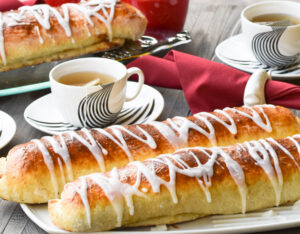
Date Walnut Bread: Rich and decadent is how I describe this “Date Walnut bread”. Tender with a heavenly combination of Medjool dates and walnuts, and a lovely sugar icing for a perfect treat. What warms my heart is realizing I am not alone in my love for this recipe, it turns out to be a favorite of many of my readers!
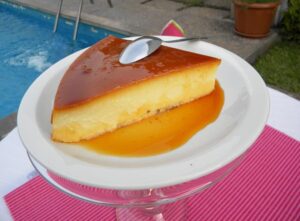
Flan: Every Lebanese household has a recipe for flan, even that the origgin is not Lebanese. Whether you call it crème caramel, crème renversée or flan, depending on where you live, this silk, smooth and creamy dessert with its running caramel sauce, never fails to amaze and will take you over the moon. After testing lots of versions, over years, to achieve the best result, I settled on this recipe, a great finale to any iftar.

Suagr syrup (Ater)is used in a wide variety of Arabic sweets. It is either drizzled over baked or fried oriental desserts, or baked or fried goods are dipped in and lifted out to sweeten and enliven them. Make sure to add the orange blossom water at the end of the cooking. The syrup can be made in advance and stored in the fridge for up to 1 month.
-
Check those 60 iconic recipes to fill out your menu for the holy month of Ramadan
-
Check those 28 foods to eat at suhoor
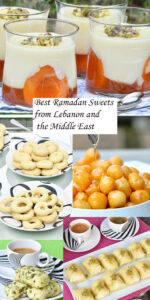
If you make any of these desserts, leave a comment below, or share your pictures on Facebook! I would love to see your creations!! Hashtag, #Hadia’s lebanese Cuisine
Subscribe to Our Newsletter
About Chef
Hadia Zebib
I am Hadia, the face behind Hadia’s Lebanese Cuisine. I grew up in Beirut Lebanon and I currently reside in Kinshasa, Congo with my husband and my three adorable sons, ...
Read more about this chef..


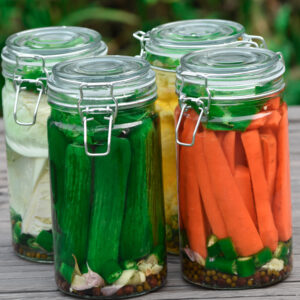
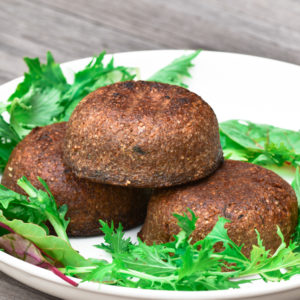
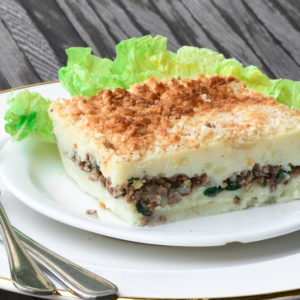
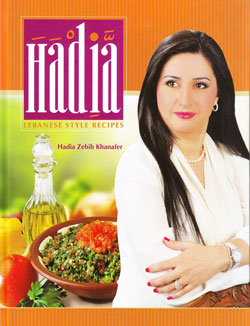
No comments yet.